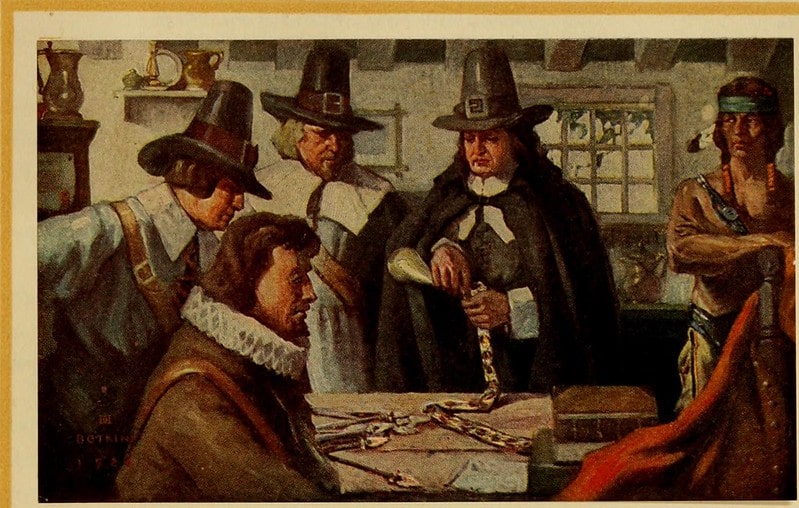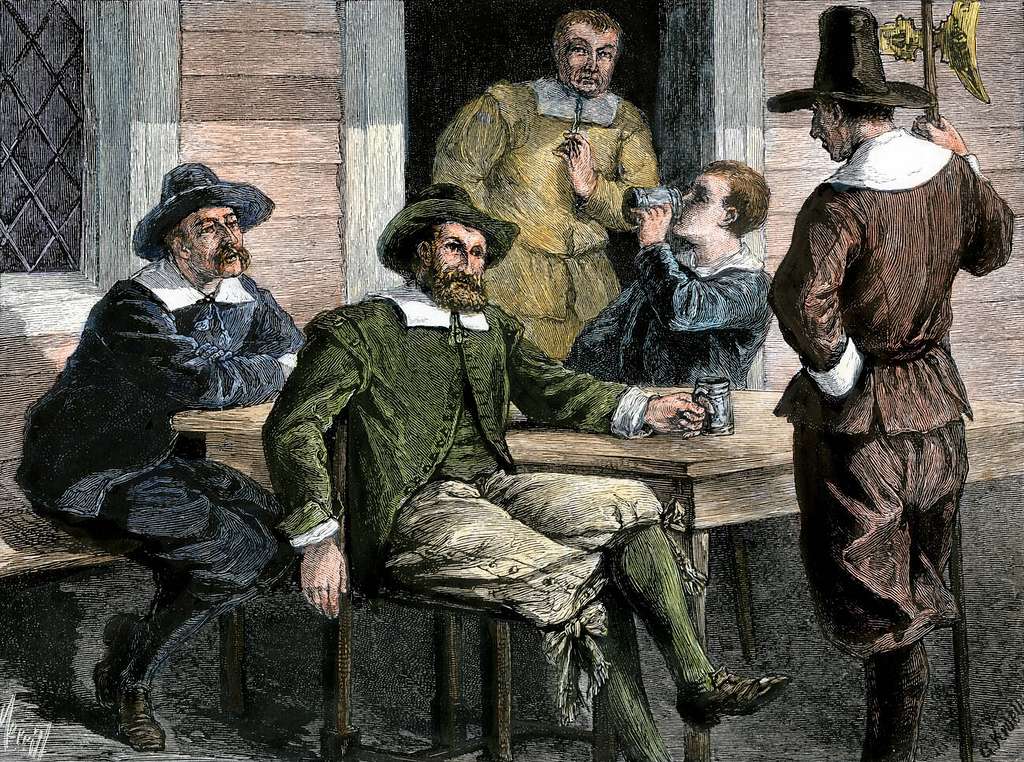Contents
Contents
The New England Colonies of Massachusetts Bay, Rhode Island, Plymouth Colony, New Hampshire, and Connecticut had largely democratic political systems.
However, democratic participation was limited to certain social groups, and religious leaders held significant power in many of the colonies.
Also, although the colonies had significant freedom to self-govern, the English had ultimate authority over their overseas territories, and often stepped in to assert their control.
Political structures

From settlement up until the American Revolution, the New England colonies were mostly self-governing.
While officially under royal control, the English parliament was preoccupied with domestic matters at the time, and mostly left the colonies to their own devices, including in New England. This policy became known as “salutary neglect“.
As a result, different colonies adopted different political structures.
Massachusetts Bay Colony was initially governed by a General Court composed of a governor, deputy governor, assistants, and freemen. Over time, it evolved into a legislature with a distinct representative assembly, meaning there were two political houses, similar to how things work today.
Like other colonies, Massachusetts operated under a royal charter, meaning that the English crown had the final say on colonial matters.
For example, the crown revoked Massachusetts Bay’s charter in 1684 to assert more control. In 1691, Massachusetts received a new charter, imposing a royally appointed governor.
On the other hand, Connecticut and Rhode Island developed more autonomous political systems, separate from the English governance system, as their royal charters granted them more autonomy.
Connecticut’s Fundamental Orders (1639) is often considered the first written constitution establishing a framework for self-government in America.
Rhode Island, originally known as Providence Plantation, was founded on principles of religious freedom, and had a similarly independent government – although, the English still had ultimate authority on colonial matters.
Religion in politics
Religion and politics were deeply intertwined in New England, especially in Massachusetts Bay.
Massachusetts was originally settled predominantly by Puritans seeking more religious freedom in the New World. As a result, government and society followed strict Puritanical principles, and this was reflected in the colony’s politics.
Only Puritan church members were initially allowed to vote or hold office in Massachusetts, and Church ministers influenced policy indirectly, even when they did not hold political office.
Throughout New England, religious principles were codified into strict laws regulating moral behavior. For example, work, travel, and drinking were often prohibited on Sundays, under what became known as “blue laws”.
Religion also had a significant influence in other New England colonies, such as Connecticut, Plymouth, and New Hampshire, which were governed under Puritan values. However, Rhode Island was an exception.
The colony was founded by religious dissenters fleeing from Massachusetts, led by a man named Roger Williams. As a result, after Rhode Island was first established in 1636, religious freedom was a core component of its governance structure, and a stronger separation of church and state was established.
Representation and voting
The New England colonies were largely democratic, although only certain groups of people were allowed to participate politically.
Voting and political involvement was restricted to male landowners in the colonies. The concept of civil rights or universal suffrage was not a consideration at the time, and as a result, women, Native Americans, and other minority groups could not vote.
Also, in Massachusetts and Plymouth, men had to be a church member before they were allowed to cast their ballot.
As a result, power was concentrated among the wealthy in New England in the 17th and 18th century.
However, power was not reserved strictly for the highest echelons of society in the colonies. Unlike in England, where power was controlled by the nobility, commoners could hold political office in the colonies – as long as they were a male landowner.
The most important mechanism for making decisions was the town meeting system. Adult male landowners or freemen gathered to discuss and vote on local matters, including taxes, land distribution, community regulations, and other laws for consideration.
Each colony was controlled by a governor, similar to how US states are governed today. Often, the governor was elected by the people, but sometimes they would be appointed by the English, such as after Massachusetts had its charter revoked in 1684.
Below the governor were assemblies of elected representatives, similar to the English parliamentary system. In the early days of Massachusetts Bay, colonists would come together to vote on matters directly, but as the colony expanded, a system of elected representatives was created to make governance more efficient.
There were also local officials known as selectmen, who were elected in town meetings to manage local affairs, such as tax collection, land distribution, and infrastructure, and constables and clerks, who enforced laws and managed town records.


